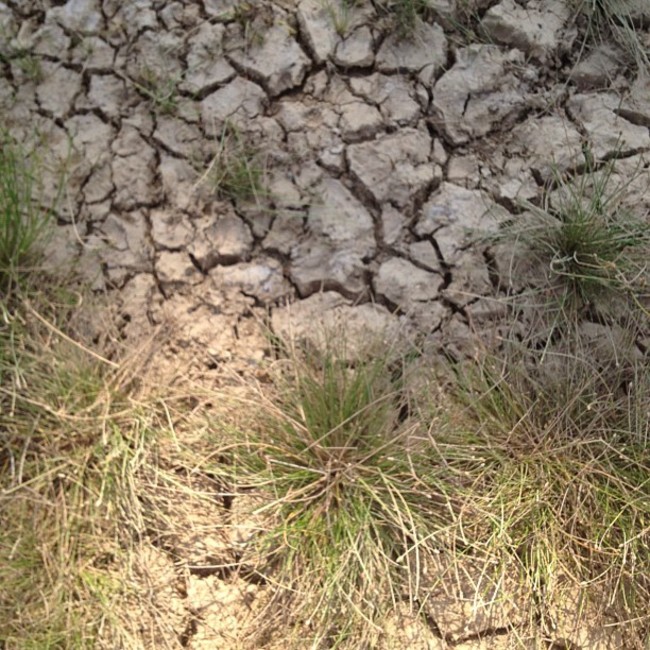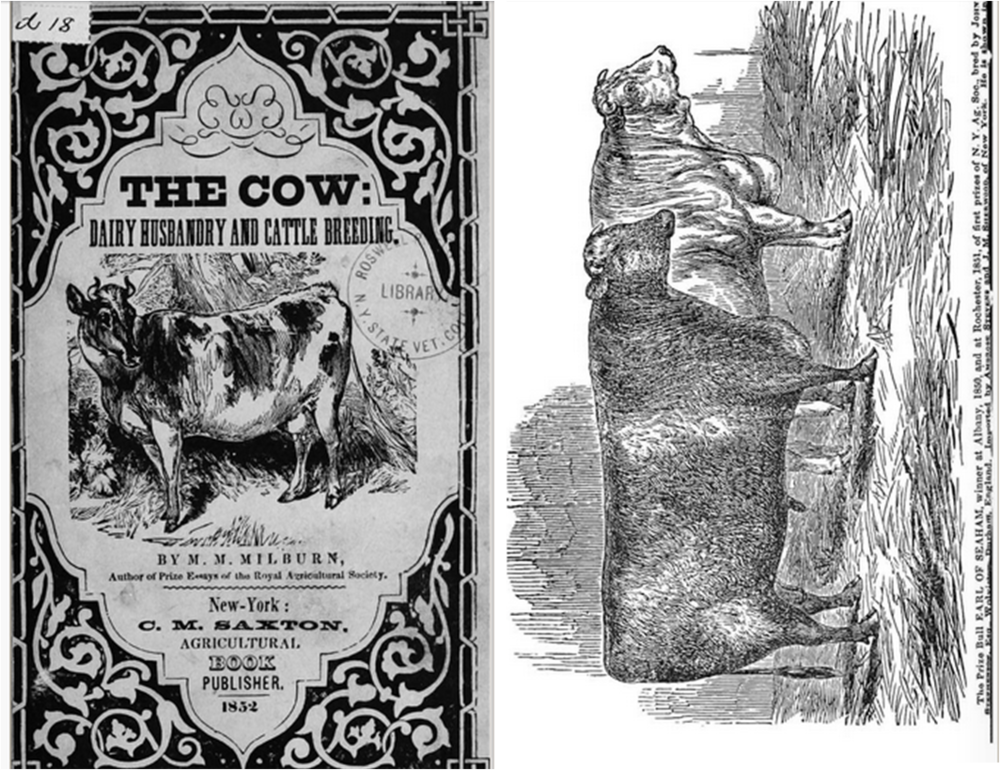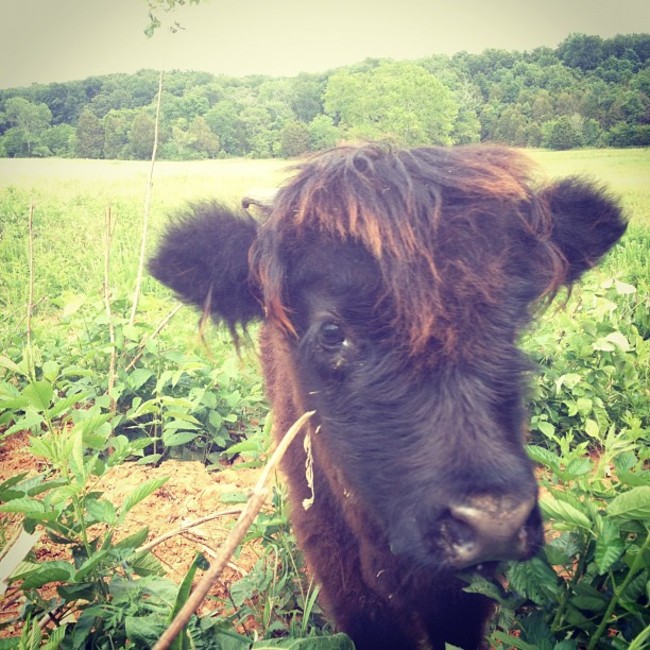This isn't a happy post. Nor a post about how to fence cows with polywire.
Rotationally Grazing Through the Drought
 The drought takes its toll. The bottom of a "pond" dries up.
The drought takes its toll. The bottom of a "pond" dries up.
Right now our area is anywhere from 30-50% behind average annual rainfall. The ground “crunches” when you walk on it. There’s still plenty of green rose bushes, lespedeza and other plants that can tolerate the drought, but all the fescue, johnson and orchard grass is dead. At least we have some grass though. Not many people in our area do. Literally every person we know that raises animals in our neck of the woods is feeding hay right now.
Feeding hay isn’t typical in June and the beginning of July. There’s generally enough pasture to go around. Our neighbors say they’ll sometimes need to feed hay at the end of August or early September if the fall rains start late (or never come), but very rarely do they start feeding hay this early in the summer.
When we drive to town it’s pasture after pasture of bare dirt. Cows and horses eating hay off tens, or even hundreds, of acres of dirt. A few months ago those fields were lush. And there’s a high likelihood that those fields would still have some grass if the farmers started rotationally grazing.
When Old Texts Go Bad. The Cow: Dairy Husbandry and Cattle Breeding
 The Cow: Dairy Husbandry and Cattle Breeding by M.M. Milburn
The Cow: Dairy Husbandry and Cattle Breeding by M.M. Milburn
I mentioned previously that I've been reading a lot of old farming books. This past weekend I came across an example of "old texts gone bad", as I like to say. These are instances where clearly the author's day and age got the better of his beliefs. I always wonder what madness we believe in today that will be ridiculed in the future, but for now I'll just do my best to avoid the madness of years gone by.
In this particular instance I was reading "The Cow: Dairy Husbandry and Cattle Breeding" by M.M. Milburn. The book was printed in 1852 and is available for free courtesy of Open Library or Google Books online. There's lots of old texts available for free on the internet, you just have to track them down. Usually, they're more helpful than more recently published books. However, Milburn went off on a tangent about 50 pages in that really makes me wonder just how much of his other information I should trust.
It starts when he writes "Some very grave facts have been arranged and classified to show that when a pure-bred animal has once been impregnated by one of another, such impreganted animal is thereby for ever afterwards a cross, and may be expected to produce a cross-bred, and no more pure-bred young."

